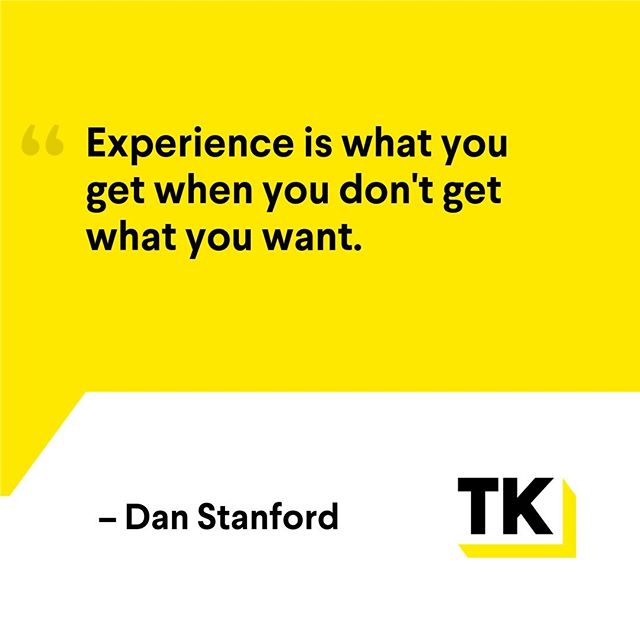The process of securing funding for your SaaS company can be challenging. Whether you’ve bootstrapped your way to a growth plateau or exhausted your initial investor pipeline, you might find yourself in need of some additional capital to fuel the next stage of growth.
Raising capital can be tricky and often confusing. There’s a lot to consider, from choosing the right funding path and attracting investors, to understanding how your business stage impacts funding.
In this article, I’ll demystify the funding process, guide you on when to seek investments, break down the different stages of SaaS funding, and share tips to increase your chances of securing funding successfully.
What is SaaS Funding?
SaaS funding is a financing option that offers help and support to companies that offer Software as a Service (SaaS) solutions. The funding helps your SaaS company grow and innovate by covering costs like development, marketing, and scaling operations.
Funding typically comes from angel investors, venture capitalists, or crowdfunding, and is crucial to survive. Raising money is not just required for a new startup to get off the ground, but also for fledgling companies to create a strong base for expansion.
A successful SaaS company will follow this typical trajectory:
- Idea
- Product Market Fit
- Growth
- Scale
- Exit
You’ll find that you need to fundraise at every single stage. (Although, not everyone raises money and can fuel growth purely off of revenue.)
Types of SaaS Funding
There are multiple different funding options available based on the stage your SaaS business is in.
Angel Investments
Angel investments are money provided by individual investors to early-stage SaaS companies. These investors use their own funds to support startups in exchange for a small ownership stake. This investment can help your startup develop the software, hire initial staff, and start growing your business. Angel investments typically occur before you receive larger funding sources like venture capital.
Pros
1. Early Stage Support: Angel investors provide crucial early funding that can help you develop your product and kick off initial growth.
2. Less Formalities: Compared to venture capital, angel funding come with fewer formalities and less bureaucracy, making the funding process quicker and more flexible.
3. Valuable Expertise: Most angel investors bring extensive experience and industry knowledge. This can be invaluable for the development of your startup.
4. Higher Risk Tolerance: Angel investors are typically more willing to take risks on unproven ideas and business models. This can allow your startup to innovate and grow before reaching significant revenue.
Cons
1. Inexperienced Investors: Not all angel investors have the necessary experience or knowledge about the SaaS industry, This can limit the strategic value they bring.
2. Misalignment: There can be differences in vision and goals between you and your angel investors.
3. Limited Capital: Angel investors typically have less capital to invest than venture capital firms. It may not be enough for substantial growth or scaling.
4. Follow-On Funding Pressure: After initial funding, there can be pressure to secure additional rounds of funding quickly.
Venture Capital
Venture capital funding is when investors provide money in exchange for a share of ownership or equity stake. Investors take on the risk with the hope that your company will succeed and their investment will become valuable.
Pros
1. Access to Capital: You get access to significantly more funds than angel investments.
2. Enhanced Credibility: Being backed by reputable investors can increase your company’s credibility and attractiveness to other investors and potential customers.
3. Market Validation: Securing VC funding can also serve as a strong validation of your business model and product market fit.
4. Accelerated Growth: With the right funding and support, SaaS businesses can grow much faster than they could through bootstrapping alone.
Cons
1. Loss of Control: Accepting VC funding can mean giving up a portion of ownership and decision making power in your company.
2. Pressure for Rapid Growth: VCs expect high returns and can put intense pressure to achieve rapid growth, sometimes at the expense of long-term stability.
3. Dilution of Ownership: As you raise more rounds of funding, your ownership stake in the company can become increasingly diluted.
4. Exit Pressure: VCs typically seek an exit strategy within a few years, such as a sale or IPO. This might not align with your vision or timing.
Venture Debt
Venture debt SaaS funding is a type of loan given to SaaS companies. Unlike VC where investors get a share of ownership, venture debt is borrowed money that needs to be repaid with interest.
This type of funding helps your SaaS business grow without giving up ownership, making it a good option if you need extra cash for expansion but want to maintain more control.
Pros
1. Less Dilution: Unlike venture capital, venture debt doesn’t require giving up equity, so you can retain more ownership and control.
2. Flexible Funding: You get additional capital without the pressure to achieve rapid growth that often comes with equity financing.
3. Complements Equity: Venture debt can be used alongside venture capital to extend your company’s runway and reach milestones before the next equity round, potentially at higher valuation.
4. Tax Benefits: Interest payments on venture debt debt can be tax-deductible, providing financial benefits to your company.
Cons
1.Repayment Obligation: Unlike equity, venture debt must be repaid with interest. This can strain your company’s cash flow, especially if revenue growth is slower than expected.
2. Shorter Terms: Venture debt has shorter repayment terms compared to traditional loans. This can add pressure to your company to perform well, quickly.
3. Collateral Requirements: Lenders may require collateral, which could include company assets or intellectual property. This can put you at risk if the company defaults on the loan, leading to bankruptcy or loss of control.
4. Restrictions: Venture debt agreements may come with restrictive covenants that limit your operational flexibility. Such restrictions include additional borrowing or specific financial performance targets.
Revenue-Based Financing
Revenue-based financing is a type of loan where you receive money and repay it through a percentage of your monthly revenue. Rather than fixed payments, the repayment amount varies based on how well your SaaS company is doing. This means if your revenue is high, you pay back more. If your revenue is low, you pay back less.
This is a flexible approach to manage your cash flow better and grow without giving up ownership or equity.
Understanding what SaaS funding options are available to you will help you carefully consider which option is the right fit for your business, and ensures alignment with your investors’ goals and expectations.
Rounds of SaaS Funding
When you are considering fundraising for your SaaS business, it depends on what stage your business is in. Understanding what round you are in when fundraising impacts how much money you can raise, who your potential investors are, and what you need to prove to them. This can all increase your chances of securing the funding you need at the stage you are in to grow your business.
Pre-Seed
The pre-seed stage of SaaS funding is the very first round of investment that will help your startup get off the ground. This stage occurs when your company is just an idea or in the early development phase of your product.
During pre-seed, founders focus on building prototypes, conducting market research, and developing a business plan. Because your business is in its infancy, you are at a point where you’re making little to no revenue, and the product may not be fully developed or launched yet. The amount of money you can raise at this stage typically ranges from $50K – $250K. Potential investors at this stage are often angel investors, friends, family, or early-stage venture capitalists.
To attract these investors, you will need to prove that your idea has potential by showing a clear vision, strong understanding of the market, and a solid plan for how your product will solve an urgent and important problem. This can be shown through your initial Go-To-Market strategy, selling to your existing network, and getting those first few set of customers for a more clarified product roadmap.
If you’re a SaaS Founder and need to build a proper scalable Go-To-Market strategy, grab a complimentary copy of my 5-Poont SaaS Growth Strategy Guide below.
Seed
The seed stage round occurs after initial development and is aimed at helping your startup launch your product and gain early traction in the market. This stage happens when your company has a working beta version and is ready to start acquiring more customers.
During the seed stage, startups will typically raise between $500K – $2M. Your potential investors include angel investors, seed funds, and early-stage venture capital firms.
To secure funding in your seed round, you need to prove that there is a demand for your product, and that you have a viable business model. This involves showing evidence of product market fit such as user engagement, customer feedback, or early sales figures.
Investors are looking for signs that your startup can grow and succeed within the market. At this point in your Go-To-Market strategy, you’ve tapped out of your initial network and have customers. But, you are starting your founder-led journey and doing the strategy work to generate more revenues and attract new customers.
Series A
The Series A round of SaaS funding happens after your startup has demonstrated some success with the initial product and market fit. This stage typically happens when your company has a solid customer base and is generating consistent revenue.
During the Series A round, startups can raise between $2M – $5M. The goal here is to scale your business, enhance your product, expand your team, and increase efforts to grow the user base and revenue further. Potential investors at this stage are primarily venture capitalist firms that specialize in early to mid-stage investments.
To secure Series A funding successfully, you need to prove that your SaaS business has serious growth potential. This can be done by revamping your existing Go-To-Market strategy to become a scalable machine for continued growth and market penetration. You must show detailed metrics and a clear path to profitability.
Series B
The Series B round of SaaS funding happens once your business has successfully scaled its operations and shown substantial growth from its Series A round. This stage occurs when your company has a solid and growing customer base with significant annual revenue.
During the Series B round, you can expect to raise between $10M – $50M or more. The potential investors include larger venture capital firms, private equity firms, and sometimes corporate investors. To secure Series B funding, you will need to demonstrate sustained growth and a strong market position. This involves showcasing impressive revenue growth, high customer retention rates, detailed financial projections, a clear path to profitability, and plans for expansion.
Investors are really looking for evidence that your company can become a market leader with the ability to dominate and continue growing at a rapid pace. At this point, you should have a repeatable Go-To-Market strategy and will need to raise more capital to fuel your machine to scale the revenues.
Series C+
The Series C+ round of SaaS funding occurs when your company is already successful and looking to scale even further. (Often at a global level). This stage typically happens when your company has established a strong market presence. Potential investors include late-stage venture capital firms, private equity firms, hedge funds, and sometimes corporate investors.
To secure Series C+ funding, you will need to demonstrate that your company is a leader in the market with robust financial performance and growth. Investors are looking for businesses that can deliver substantial returns, often through a future IPO or acquisition.
Preparing to Fundraise Successfully
First-time SaaS Founders approach fundraising with the misconception that they need money to figure out distribution and strategy. However, most venture capitalists and investors prefer to invest in startups that already show promising traction and momentum in the market.
For second-time founders, the lesson is clear: Already having a solid grasp on your GTM strategy is the way.
Whether you’re in the seed stage or pursuing Series C funding, investors are looking for businesses with a clear path to success and continuous growth.
SaaS Funding GTM
The key to successful fundraising lies in the preparation and execution of a scalable Go-To-Market strategy. A well thought out GTM strategy will instill confidence in investors that your startup not only has a compelling product, but also a clear roadmap to capture market share and achieve sustainable growth.
So, what goes into a proper GTM machine?
1. Ideal Customer Profile
Your Ideal Customer Profile (ICP) is a detailed description of the perfect customer for you. These are all based on factors like industry, company size, revenue, and most importantly, their ultimate pain. Understanding your ICP is crucial as it helps you target the customers most likely to benefit from your SaaS solution.
This is something I help with extensively inside my SaaS GTM coaching program. I’ve seen founders completely miss the target when fleshing out their ICP. Instead of a proper ICP, many founders find themselves creating a wishlist of customers. So, I walk the founders I coach through a 29-point data driven ICP exercise to drive clarity.
2. Messaging and Strategic Narrative (Manifesto)
What will you say to potential buyers to set yourself apart from the competition? What value do you offer, and why should customers pay attention?
These are all the things that form a strong value proposition, messaging strategy, and overall strategic narrative. Skipping this step means mobilizing without direction. You’d be firing blanks without a clear target.
Your messaging should educate potential buyers on the big transformation your product will bring them, and how you will solve their biggest pain.
3. Sales and Marketing Execution (Broadway Show)
Based on the segment of the market you are targeting and what your messaging is, you will now figure out how to mobilize and implement your GTM strategy execution.
Consider what sales and marketing motions you will be executing on a daily basis. This includes Ads, outbound, inbound. What will you be doing every day to distribute your message to your ICP?
Pitch Deck
Lastly, one of the most important things that will capture investors’ attention is a winning pitch deck. Your pitch deck serves as your startup’s first impression. You should provide a clear and compelling narrative about your business to help investors quickly grasp your vision and potential. This includes outlining the market opportunity, GTM strategy, financial projections, and your team.
A strong pitch deck can help make it easier for investors to understand why your startup is worth their investment. If you’d like to create a winning pitch deck, watch the video below.
In Conclusion
There are several options available to you when it comes to SaaS funding. Understanding what those options are and when you should take advantage of them will help you better prepare when raising a round. No matter which route you decide to take, don’t underestimate the amount of work you will need to put in when trying to raise funds.
The more prepared you are, the better.
If you’re an early-stage SaaS Founder preparing to raise a round through SaaS fundraising and are in need of a proper, scalable GTM strategy, grab a complimentary copy of my 5-Point SaaS Growth Strategy Guide below where I break down the 5 most critical steps in creating a Go-To-Market strategy for your SaaS business.












